Hi i start my ADR training on monday any advice or tips that might come in handy ![]()
Diesel Dave’s the man for this - - he may be along in a bit when he’s had his afternoon nap!
Seriously, listen to your instructor and you should be fine. Good luck with it, Pete ![]()
![]()
cheers mate thanks for your help ![]() il let you no how i get on
il let you no how i get on
Hey Ste,
I done my ADR in packages & tanks back in 2010 and it’s really very straight forward. Just enjoy it mate and I almost guarantee you will not fail! ![]()
All the best!
listen to the instructor he will tell you what you NEED to know, and fudge over the nonsense. try not to listen to other drivers as every time you miss something its a point lost and can cause you to make mistakes on the paper.
ste_leeson:
Hi i start my ADR training on monday any advice or tips that might come in handy
Hi Ste,
![]()
![]() I’m sorry I couldn’t get to your post before now, that’s cos I was away teaching ADR.
I’m sorry I couldn’t get to your post before now, that’s cos I was away teaching ADR.
You’ll be able to answer a number of exam questions if you study the UN Class system for dangerous goods:
The classification system (classes) comes from the UN, and is valid for all modes of transport.
The idea is that it covers ships and aeroplanes worldwide, not just EU trucks and ADR.
Class 1 Explosive substances and articles
Class 2 Gases
2.1 Flammable gases
2.2 Non Flammable, Non-toxic gases
2.3 Toxic gases
Class 3 Flammable liquids
Class 4.1 Flammable solids, self-reactive substances and solid desensitized explosives
Class 4.2 Substances liable to spontaneous combustion
Class 4.3 Substances which, in contact with water, emit flammable gases
Class 5.1 Oxidizing substances
Class 5.2 Organic peroxides
Class 6.1 Toxic substances
Class 6.2 Infectious substances
Class 7 Radioactive material
Class 8 Corrosive substances
Class 9 Miscellaneous dangerous substances and articles
Here are the relevant danger warning signs for the 9 classes:
UN Class 1

UN Class 2
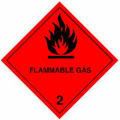

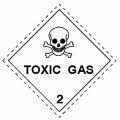
UN Class 3

UN Class 4
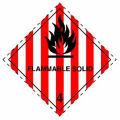
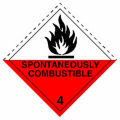
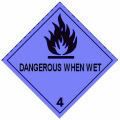
UN Class 5
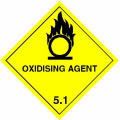
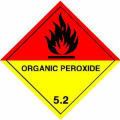
UN Class 6
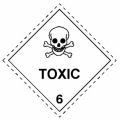
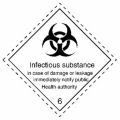
UN Class 7

UN Class 8

UN Class 9


It’s important to realise the purpose of the UN Class system…
The Classes indicate the TYPE of danger Eg, fire, explosion, being poisoned etc but NOT forgetting that all 9 Classes can kill. The biggest (and VERY frequent) mistake made by ADR exam candidates is to believe that any of the Classes are more dangerous than another. Classes ONLY indicate the TYPE of danger, nothing more.
The Class system comes from the UN and is used worldwide by all modes of transport, Eg:
ADR = Road,
RID = Rail
ICAO/IATA = Air
IMDG = Sea.
In your multiple choice ADR exams, you can be asked about the colours of the placards/labels. (Eg what colour is a Class 3 label?)
You can also be asked about the name of a Class. (Eg, what type of substances are in Class 2.1?)
You can also be asked about the little pictogram in the top of each label. (Eg What is the danger sign for Class 6.2?)
So my tip for this is that you learn the colour(s,) number, danger sign and name for each of the UN Classes.
Of course, we do need to know how dangerous a substance or article is, so the UN has given us the concept of Packing Groups (PGs.) There are three PGs which are ALWAYS written by using Roman numerals. The PGs are called PGI, PGII and PGIII (Other words describing the purpose of PGs are severity or level of danger.)
PGI = high danger
PGII = medium danger
PGIII = low danger
That’s all fine, but ADR has one extra idea (so this is valid for road ONLY) and that’s called ‘Transport Categories.’ (TCs.)
There are five Transport Categories, and they’re numbered 0-4 in a descending order of LEVEL or DEGREE of danger. ADR places all dangerous goods into one of the five Transport Categories to allow vehicles/drivers to move small amounts of dangerous goods without the immediate need for orange plates or an ADR licence. So, there are allowances given, depending on the level of danger, for each of the Transport Categories before the full weight of the ADR Regulations applies to a job.
The legal responsibility for deciding whether ADR applies to a job (or not) is upon the owner of the vehicle (the Carrier) NOT the driver.
Dave’s ADR trivia fact… This used to be a driver’s job, but the UK law changed the responsibility for this decision to the Carrier back in 2004, so you can’t be asked that type of question in an ADR driver’s exam, because it isn’t a driver’s responsibility. ![]()
Just to give you a very approximate handle on ADR Transport Categories, I’ve translated a page from a rather thick law book into plain English:
As you can now see, ADR Transport Category 0 is by far the most dangerous, cos there’s NO allowance.
As the level of danger decreases, the allowance increases.

![]() The table above ONLY relates to the carriage of dangerous goods by road in packages.
The table above ONLY relates to the carriage of dangerous goods by road in packages.
There’s plenty of other ADR info in several pages of my ramblings here, but please make a flask and some butties before reading it.
Oh, and please don’t forget to inform your loved ones that you may be missing for quite some time: ![]()
![]()
![]() Dangerous goods advice- UK regs and ADR - SAFETY, LAW AND WORKING TIME DIRECTIVE FORUM (INTE - Trucknet UK
Dangerous goods advice- UK regs and ADR - SAFETY, LAW AND WORKING TIME DIRECTIVE FORUM (INTE - Trucknet UK
I’d like to wish you good luck in your exams, although the advice you’ve already received from other posters above about it all being straightforward and asking your instructor if you’re unsure is absolutely spot-on. ![]()
Dave’s ADR exam tips:
All ADR exam questions are multiple choice, so you’ll select your answer from the four options given and give your answer by writing an “X” in a box on your answer sheet.
Read each question and ALL four options very carefully and beware of words like “always” and “never.”
If you think about this, the correct answer for EVERY question will already be written for you.
If you have any other questions, I’ll look at your post frequently this week and answer them for you.
I hope this helps. ![]()
Thanks dave for the info yeh haha took me a while 2 read all that ![]() but am so greatfull for you helping me out n taking the time write all that, todays obv been my 1st day i found it ok alot to take in but am getting the hang of it
but am so greatfull for you helping me out n taking the time write all that, todays obv been my 1st day i found it ok alot to take in but am getting the hang of it ![]() il keep you informed how i get on
il keep you informed how i get on ![]()
ste_leeson:
Thanks dave for the info yeh haha took me a while 2 read all thatbut am so greatfull for you helping me out n taking the time write all that, todays obv been my 1st day i found it ok alot to take in but am getting the hang of it
il keep you informed how i get on
Yes Ste, please keep us informed. ![]()
![]() Just remember mate, you’re not alone. Just ask and I’ll answer.
Just remember mate, you’re not alone. Just ask and I’ll answer. ![]()
Hey dieseldave is the colour and the class one of the main things you need to remember and learn for the exams ? ive just got in from my second day its starting to fall into place abit more now lol still all every new to me compaired to some of the lads that have been there and done it before lol just hoping i pass friday haha
ste_leeson:
Hey dieseldave is the colour and the class one of the main things you need to remember and learn for the exams ?
Hi Ste,
I wouldn’t say “main,” cos you’ll be asked questions from across all the subjects you’ve covered, but you can be asked questions about the colour, the number and the danger sign.
TBF, I didn’t cover the names of the danger signs.
The danger sign is the little picture (called a “pictogram”) in the top of placards/labels.
These are as follows:
Class 1 = Bursting bomb.
Class 2.1 = Flame
Class 2.2 = Gas cylinder
Class 2.3 = Skull and crossbones
Class 3 = Flame
Classes 4.1, 4.2 and 4.3 = Flame
Class 5.1 = Letter “O” with a flame
Class 5.2 = Flame
Class 6.1 = Skull and crossbones
Class 6.2 = Microscope
Class 7 = Trefoil
Class 8 = Two test tubes
Class 9 has NO danger sign in the top.
Now for the subject of common hazards.
For example, everything in Class 2 is compressed, everything in class 4 burns etc.
The best way to picture this is to accept that the ‘stuff’ in Class numbers 1-8 all have very specific legal definitions.
If a substance or article is dangerous, but doesn’t legally fit one of these definitions, then it belongs in Class 9.
Class 9 was invented as a “none of the above” Class specifically to take care of nasty ‘stuff’ that wouldn’t fit elsewhere in any of the other Classes.
The dangerous substances and articles in Class 9 are all dangerous, but DO NOT have a common hazard and that’s the reason that Class 9 has no pictogram in the top of the placard/label.
Asbestos, lithium batteries, a self-inflating life raft and polymeric beads are all in Class 9 (along with many other dangerous substances and articles,) because they don’t fit the definitions and classification requirements that would require them to be included in any other Class. However, they still are legally counted as dangerous goods and so Class 9 is the only home for them.
ste_leeson:
ive just got in from my second day its starting to fall into place abit more now lol still all every new to me compaired to some of the lads that have been there and done it before lol just hoping i pass friday haha
Yes Ste, that’s what most people find.
The idea of colours, numbers and danger signs gets neatly around the fact that not everybody around the world can understand each other’s writing or languages, so the UN gave us this system in order to avoid that problem.
Therefore, the writing on the placards/labels isn’t a legal requirement, but the colour, number and danger sign ARE ALL legally required.
Let’s see whether you’ve got the idea of what’s what with placards/labels… ![]()
The four placards below are all legal, and the writing (or lack of it) doesn’t matter because the UN worldwide system has neatly dealt with that problem for us.




I hope this helps. ![]()
Thank you its all help and am very greatfull ![]() that makes alot of sence but we will see come friday if its all gone in and i remember it all lol il keep to posted mate
that makes alot of sence but we will see come friday if its all gone in and i remember it all lol il keep to posted mate ![]() thanks again
thanks again
Hey Ste,
Well? How did it go matey?
We are all waiting here to find out if it’s good news… ![]()
haha sorry matey ![]() well i did all my exams but i dnt find out for about 4 weeks so they have said lol did you find out the same day that you passed ? i just seen you post about your C+E sorry to here about that mate sure yul pass next week
well i did all my exams but i dnt find out for about 4 weeks so they have said lol did you find out the same day that you passed ? i just seen you post about your C+E sorry to here about that mate sure yul pass next week ![]()
Hi Ste,
Yeah, I was a moron! ![]() I cannot believe I failed to tell the examiner about checking the parking brake on the trailer was on before coupling the tractor unit to it. But hey, we ALL learn better from mistakes don’t we?
I cannot believe I failed to tell the examiner about checking the parking brake on the trailer was on before coupling the tractor unit to it. But hey, we ALL learn better from mistakes don’t we? ![]()
Erm, yeah I think I knew I had passed the ADR before getting the actual results. Then again, I didn’t find it difficult, and thought a lot of it was very straight forward and common sense in a lot of places so I wasn’t worried about waiting to get the certificate. ![]()
I’m sure you will get a positive result mate. Here’s hoping anyway…
Well sure yul pass nxt week mate ![]() il keep yu posted with my news lol
il keep yu posted with my news lol
ste, I think I was on that course with you mate? We had a guy from Norbert Dentresangle, Dennis Dixons and an MP Squaddy??
Adam ![]()
Diesel-truckin:
ste, I think I was on that course with you mate? We had a guy from Norbert Dentresangle, Dennis Dixons and an MP Squaddy??Adam

![]()
Sorry mate not been on for a few weeks but yes that was the course i was on ![]() hows it going? And have you have your results back yet?
hows it going? And have you have your results back yet?
Hi all, i’m new here. ![]()
I’m after some advice on an ADR course that i am thinking about doing in the next few months.
I’ll give you all a bit of info about myself, i’m in my 30’s and i’ve had a class 2 licence now for 18 months and have been doing permanent full-time class 2 work for the last year.
I’d really like to get into an ADR job if possible, it’s something i’d like to do, like petrol tanker or gas/oxygen cylinders but i’m abit worried that if i take the course i’d stuggle to find work as i’d have no experience doing ADR jobs.
The course is £500, i’d have to take a week off work to do it and am just worried that it’d just expire without me using it. (I did a Hiab course about 16months ago when i first got my licence and haven’t used it so am abit unsure).
I have been doing ADR all this week with exams tomorrow,i would say the chances of you getting a fuel delivery driver job are very slim to none even if you had class 1 its a very specialist job, hence why you rarely if ever see them advertised by agencies or indeed anyone for that matter , you are more likely to get on a calor gas multi-drop contract with manpower agency with the required classes. Its been the most interesting course i have ever attended, but a lot to absorb in the week.